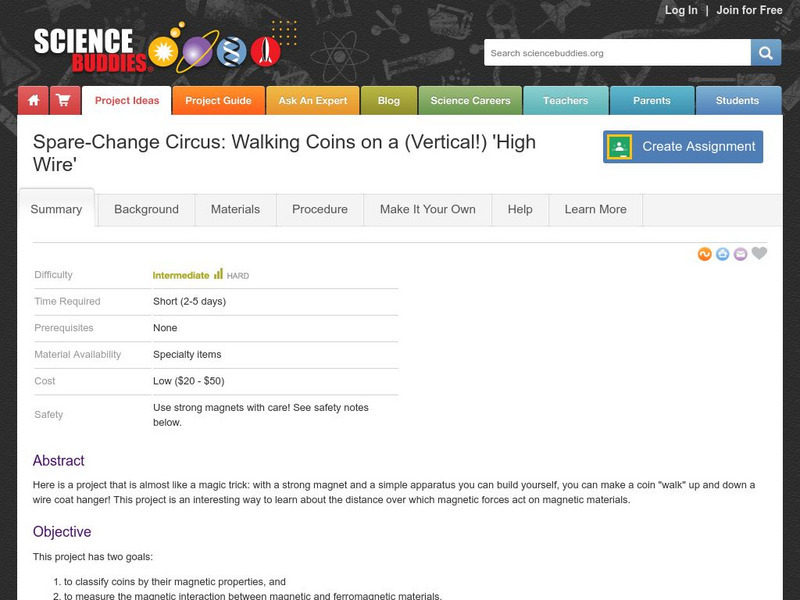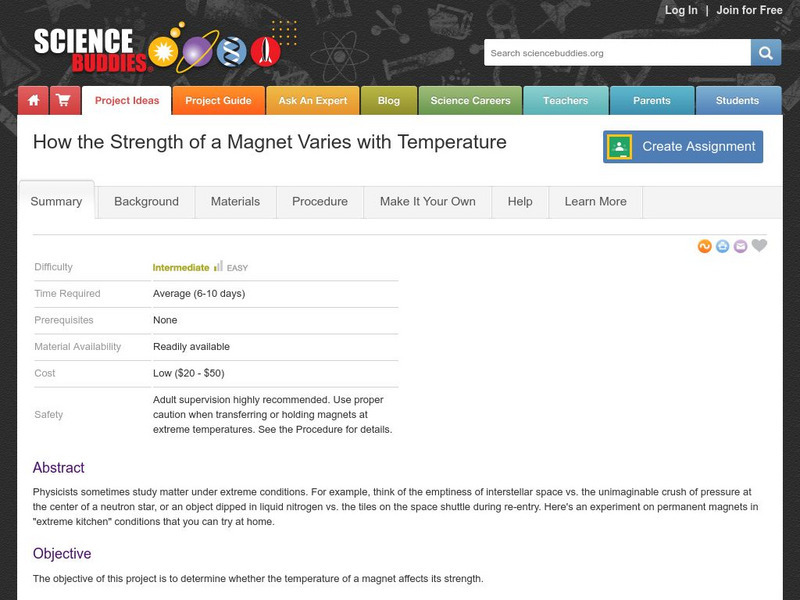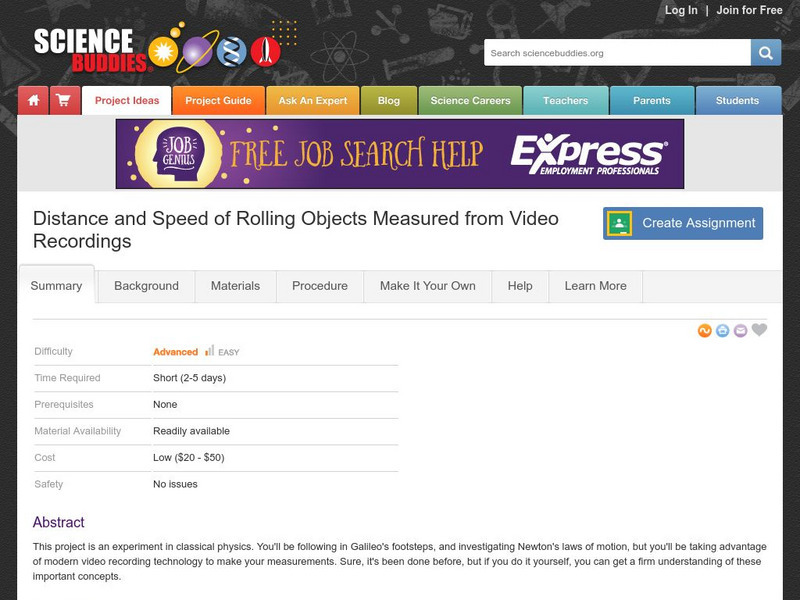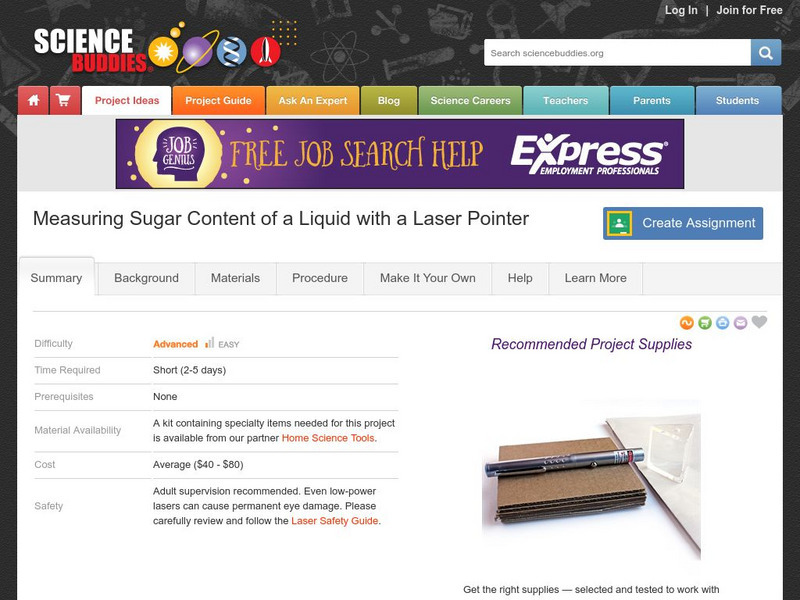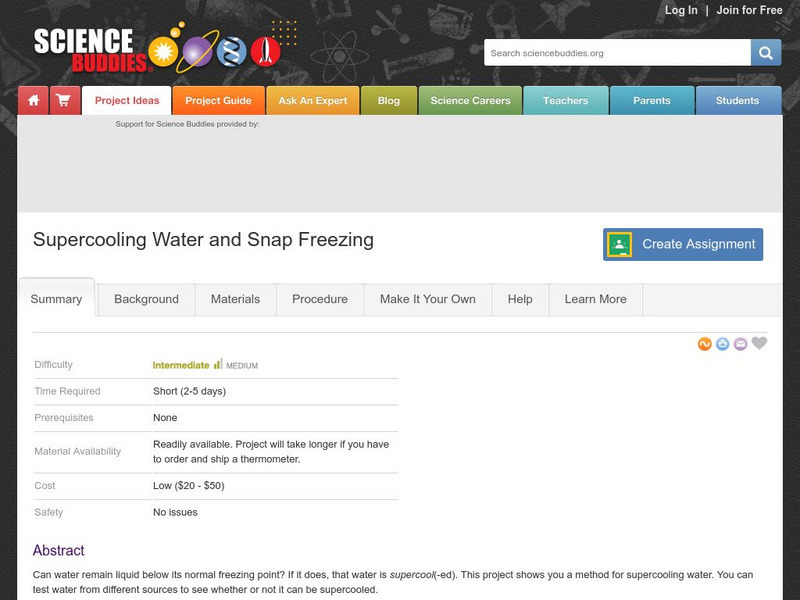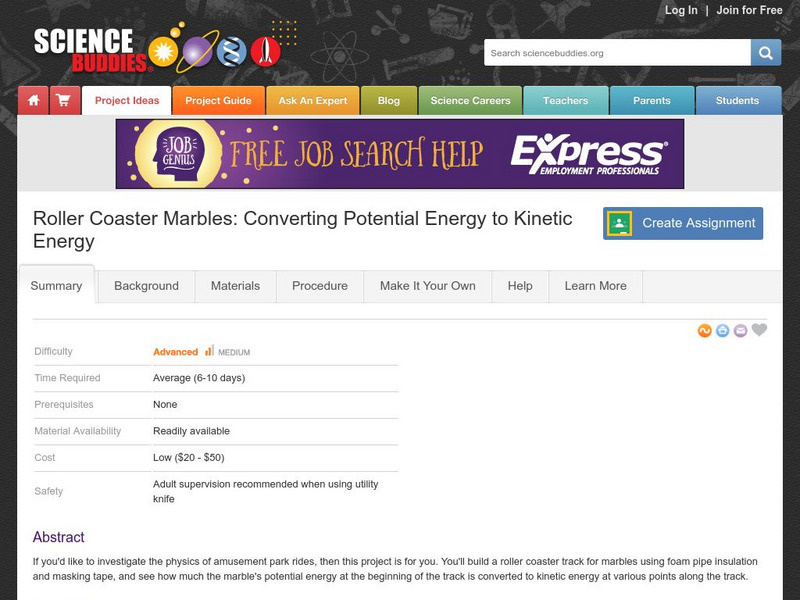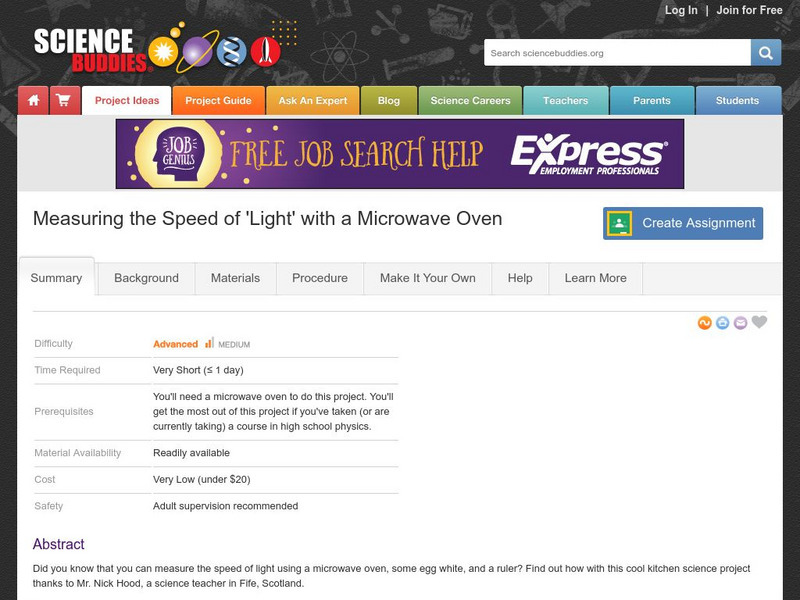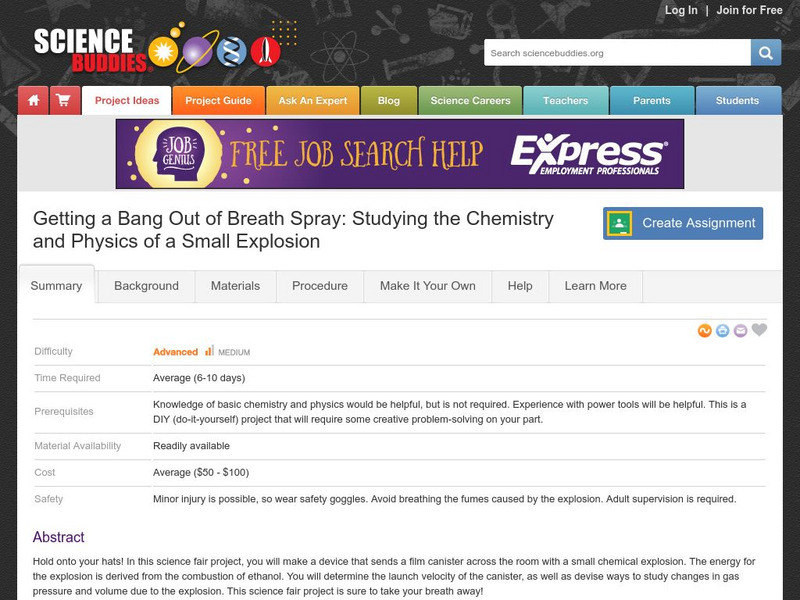Science Buddies
Science Buddies: Slip Sliding Away: Experimenting With Friction
As you headed up the mountain to enjoy your last ski trip, you may have noticed a sign reading: Hazard. Icy Roads Ahead, Put On Your Chains. Putting chains on car tires increases the resistance between the tires and the road allowing the...
Science Buddies
Science Buddies: Balancing the Load: The See Saw as a Simple Machine
Have you ever tried to pull out a nail out of wood with your bare hands? Or have you tried to shove a staple through a stack of papers without a stapler? A hammer's claw, a stapler, a pair of pliers and a shovel are each examples of...
Science Buddies
Science Buddies: What Goes Up, Must Come Down
Standing on a balcony near the top of the 179-foot tall Tower of Pisa, a young scientist dropped two iron balls into the crowd below. The scientist, young Galileo, was not trying to knock his fellow professors on the head, but was trying...
Science Buddies
Science Buddies: Swing Low: Investigate the Motion of a Pendulum
Kids love to ride the swings at the playground. The back-and-forth motion of a swing demonstrates the physics of a pendulum. In this experiment, you will investigate the factors that affect the speed and duration of a pendulum's swing.
Science Buddies
Science Buddies: Centripetal Force
What keeps you in your seat of a giant loop-de-loop roller coaster? Surprisingly, it is not the seatbelt but the seat. It works because of something called centripetal force and it does much more than make a great roller coaster. In this...
Science Buddies
Science Buddies: A Magnifying Discovery
Have you ever looked through a magnifying lens? Why do things look bigger when you look at them through the magnifying lens? Even though the object appears to get larger, it really stays the same size. Each lens has its own unique power...
Science Buddies
Science Buddies: Walking Coins on a (Vertical!) 'High Wire'
Here is a project that is almost like a magic trick: with a strong magnet and a simple apparatus you can build yourself, you can make a coin "walk" up and down a wire coat hanger. This project is an interesting way to learn about the...
Science Buddies
Science Buddies: How the Strength of a Magnet Varies With Temperature
Physicists sometimes study matter under extreme conditions. For example, think of the emptiness of interstellar space vs. the unimaginable crush of pressure at the center of a neutron star, or an object dipped in liquid nitrogen vs. the...
Science Buddies
Science Buddies: Distance and Constant Acceleration
This project is an experiment in classical physics. You'll be following in Galileo's footsteps, and investigating Newton's laws of motion, using a metronome as your timing device. This resource will help you get a firm understanding of...
Science Buddies
Science Buddies: Distance and Speed of Rolling Objects
This project is an experiment in classical physics. You'll be following in Galileo's footsteps, and investigating Newton's laws of motion, but you'll be taking advantage of modern video recording technology to make your measurements. The...
Science Buddies
Science Buddies: Measuring Sugar Content of a Liquid With a Laser Pointer
Here's a project that shows you how to use a laser pointer and some knowledge of physics to figure out the concentration of sugar dissolved in a liquid.
Science Buddies
Science Buddies: Frequency Dependent Sound Absorption
Want to start a garage band, but Mom or Dad won't let you because it will make too much noise? This is a good project for someone who is interested in acoustics and likes to build things. The objective of this project is to determine if...
Science Buddies
Science Buddies: How Does Color Affect Heating by Absorption of Light?
Light is an example of an electromagnetic wave. Electromagnetic waves can travel through the vacuum of interstellar space. They do not depend on an external medium-unlike a mechanical wave such as a sound wave which must travel through...
Science Buddies
Science Buddies: Measuring Light Intensity Using the Inverse Square Law
You've probably heard that compact fluorescent light bulbs are more efficient than incandescent bulbs. More of the electricity they use goes into producing light, and less into producing heat than with incandescent bulbs. How much more...
Science Buddies
Science Buddies: Investigate Mpemba Effect Can Hot Water Freeze Faster Than Cold
This physics project seems like it should have an easy answer. Instead, it turns out to be a great illustration of why it is important to base scientific conclusions on the outcome of controlled experiments. Things don't always turn out...
Science Buddies
Science Buddies: Supercooling Water and Snap Freezing
Can water remain liquid below its normal freezing point? If it does, that water is supercool(-ed). This project shows you a method for supercooling water. You can test water from different sources to see whether or not it can be...
Science Buddies
Science Buddies: Extreme Sounds: Lessons in a Noisy World
Just how loud does a sound have to be for us to hear it? And how loud is too loud for our ears? Learn to measure levels of sound in this project, and discover the amazing auditory range your ears can detect in the noisy world around you.
Science Buddies
Science Buddies: Technicolor Shadows: Lessons in Light and Color
Is that right side of your brain yearning to express its artistic side? This is a project that blends art with science. Learn about light and colorful shadows in these experiments where you mix and match various colors of light to create...
Science Buddies
Science Buddies: Roller Coaster Marbles: How Much Height to Loop the Loop?
This is a really fun project even if you don't like going on roller coasters yourself. You'll build a roller coaster track for marbles using foam pipe insulation and masking tape, and see how much of an initial drop is required to get...
Science Buddies
Science Buddies: Converting Potential Energy to Kinetic Energy
If you'd like to investigate the physics of amusement park rides, then this project is for you. You'll build a roller coaster track for marbles using foam pipe insulation and masking tape, and see how much the marble's potential energy...
Science Buddies
Science Buddies: What Is the Maximum Intermediate Height for a Siphon?
If you have ever had a fish tank, you have owned an operating siphon. A siphon is a handy device for emptying out a liquid reservoir that has no drain. As a result, they are great for cleaning fish tanks. Liquid in a siphon flows...
Science Buddies
Science Buddies: Measuring the Speed of 'Light' With a Microwave Oven
In this experiment, you will measure the speed of light using a microwave oven, some egg white, and a ruler. This short project proves to be an extremely interesting choice for a science lab, with pictures for illustration, and thorough...
Science Buddies
Science Buddies: Build a 'Breath Spray Bomb' to Study Small Explosion
Hold onto your hats. In this science fair project, you will make a device that sends a film canister across the room with a small chemical explosion. The energy for the explosion is derived from the combustion of ethanol. You will...
University of Colorado
University of Colorado: Physics 2000: Quantum Atom
Several pages with an interesting discussion of the visible light spectrum and atomic absorption and emission line spectrum. Features excellent graphics, thorough and understandable discussion, and many interactive Java applets.








